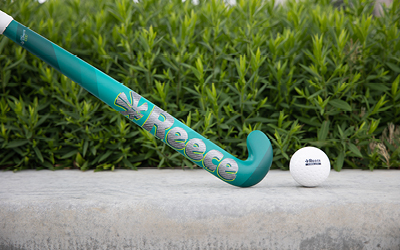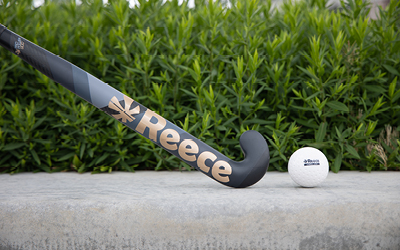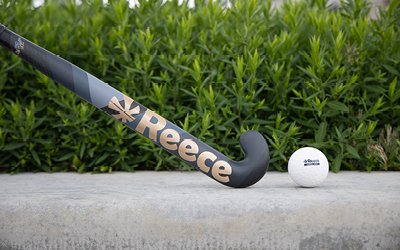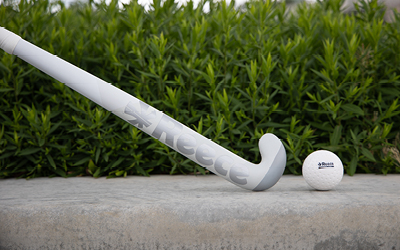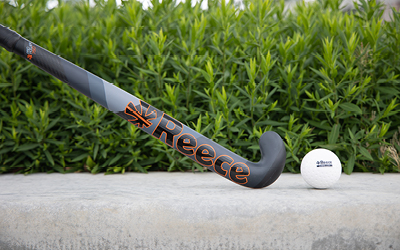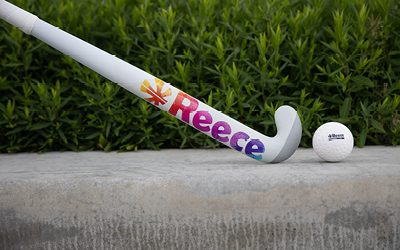Which hockey stick is right for you?

With the right hockey stick, you can take on the whole world! Our ambassadors know all about it. The top players Josine Koning, Lars Balk, Glenn Schuurman, Tom and Mats Grambusch and Timm Herzbruch have all chosen a Reece hockey stick! So there is no doubt about the quality, but there are so many different sticks, which one suits you best?
We help you to discover this by explaining the different sticks from Reece. The most important things to pay attention to are the bow, curvature, material and length. It goes without saying that a difference in the weight of the sticks, the curvature, the size and the material (and its corresponding stiffness) significantly influences your game. We hope you can make a good choice which suits your style of play, personal preferences and position in the field. Questions? Ask them in the chat, and we'll get back to you as soon as possible.
MATERIAL: WHICH MATERIAL HOCKEY STICK IS RIGHT FOR YOU?
Different materials are used for the sticks. Most junior sticks from Reece consist of a combination of wood and fibreglass, and the Blizzard 200 JR consists partly of carbon. Most senior sticks consist of synthetic material combinations of carbon, kevlar and fibreglass. The ratio between these materials determines the stick's stiffness, weight and playing feel. Every stick has a different composition. By looking at the properties of each material and its proportion in the stick, you can find out what the material can do for you. The most important properties of the materials are
- Carbon: for extra stiffness and strength
- Kevlar: for vibration absorption and impact reduction
- Fiberglass: for durability and strength
- Wood: for optimal ball feeling
The percentage of carbon in a stick is an essential indicator of its stiffness. The stiffer the hockey stick, the less energy is lost on bending the stick. For this reason, sticks with a high carbon content are often chosen by players who consider striking and power essential. A less rigid stick increases ball feel. Ball feeling is important for the development of technique.
Sticks with a high carbon percentage:
HIGH-QUALITY MATERIAL ADDITIONS: FOR THOSE WHO WANT A NEXT-LEVEL STICK
In addition to our sticks' excellent core properties, many hockey sticks are equipped with various high-quality additions. These are:

Carbon technology: sticks with this technology are made of hyper carbon, for even more power and feeling. Hyper carbon ensures a high impact reduction and quickly catches hard balls.

IDS: The abbreviation IDS stands for Integrated Damping System. The cap of the stick's grip blocks vibrations. This reduces the risk of arm injuries and ensures a smooth take-up of the ball.

Ultra lightweight: With ultra-light sticks, dribbling costs less power. A high carbon content results in a very light stick with which the player can still hit hard.

XL grip: because many players have indicated that they enjoy a more extended grip when playing with the stick, many Reece sticks have an extra long grip.
WHICH BOW SHOULD YOU CHOOSE, AND WHAT ARE THE DIFFERENCES BETWEEN THE BOWS?
A hockey stick's curvature, or 'bow', is also a fundamental characteristic. The curvature of the stick is indicated in millimetres, and at Reece, it varies from 22 mm to 24.7 mm. The stronger the curvature (i.e., the more mm), the more technical the player's play often is. Playing with a strong curvature, therefore, requires some practice. If you are a beginner or an amateur, you might choose a lower curvature than if you are a professional.
Everything is listed per bow:
EXTREME LOW BOW
- curve of 24,7 mm
- bow at the bottom of the stick
- pro bow++ facilitates pushing
- strong curvature for the most technical players

LOW BOW
- curve of 24.7 mm
- bow at the bottom of the stick
- pro bow+ facilitates the push
- Strong curvature for technical players

MID BOW
- curve of 24.7 mm
- bow in the middle of the stick
- optimal balance between control and easy hitting
- strong curvature for technical players

REGULAR BOW
- curve of 22 mm
- bow in the centre of the stick
- Standard curvature for all-round use

TABLE TO DETERMINE THE LENGTH OF A HOCKEY STICK
What is the correct length of your hockey stick? Hockey sticks are available from size 24" up to size 37.5". Especially for children, it is vital to buy the right size stick. A stick that is too short reduces the striking power and negatively influences the posture. A stick that is too long makes it difficult to control the ball and teaches the wrong technique. Look at the table to indicate the right stick length for every body size.

Junior hockeysticks size 24’’ to 35’’

Senior hockeysticks size 36,5’’ and 37,5’’


